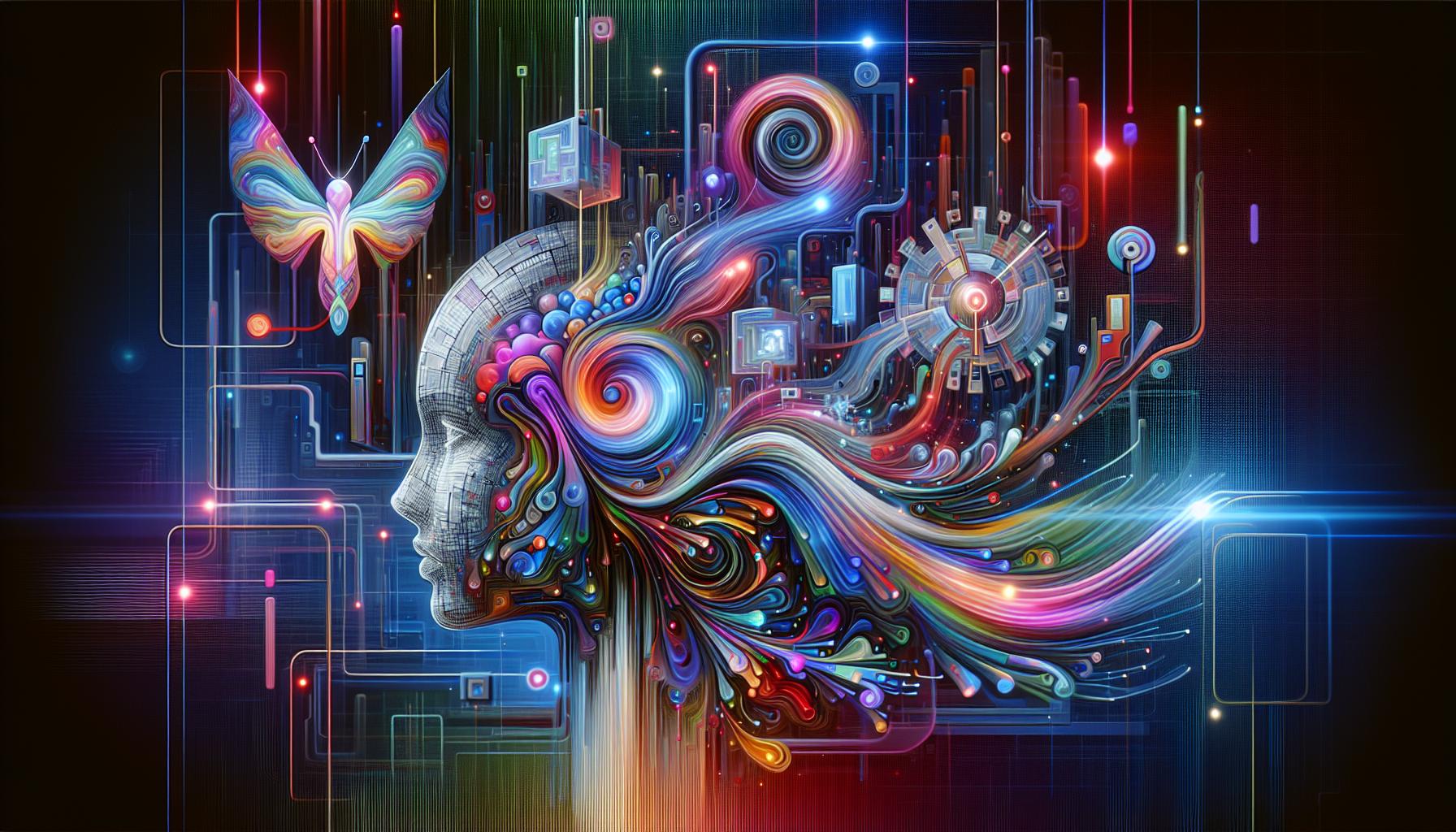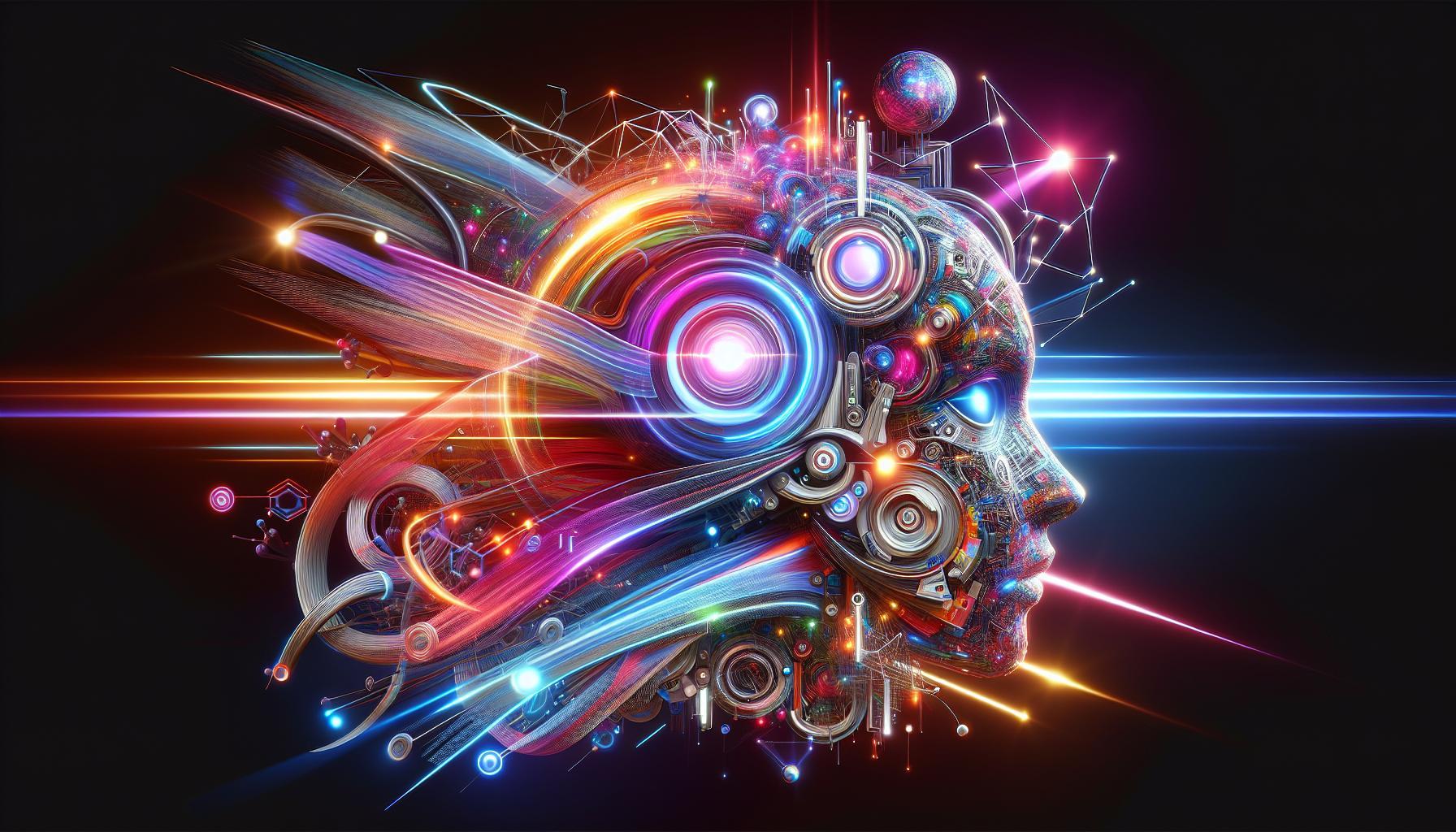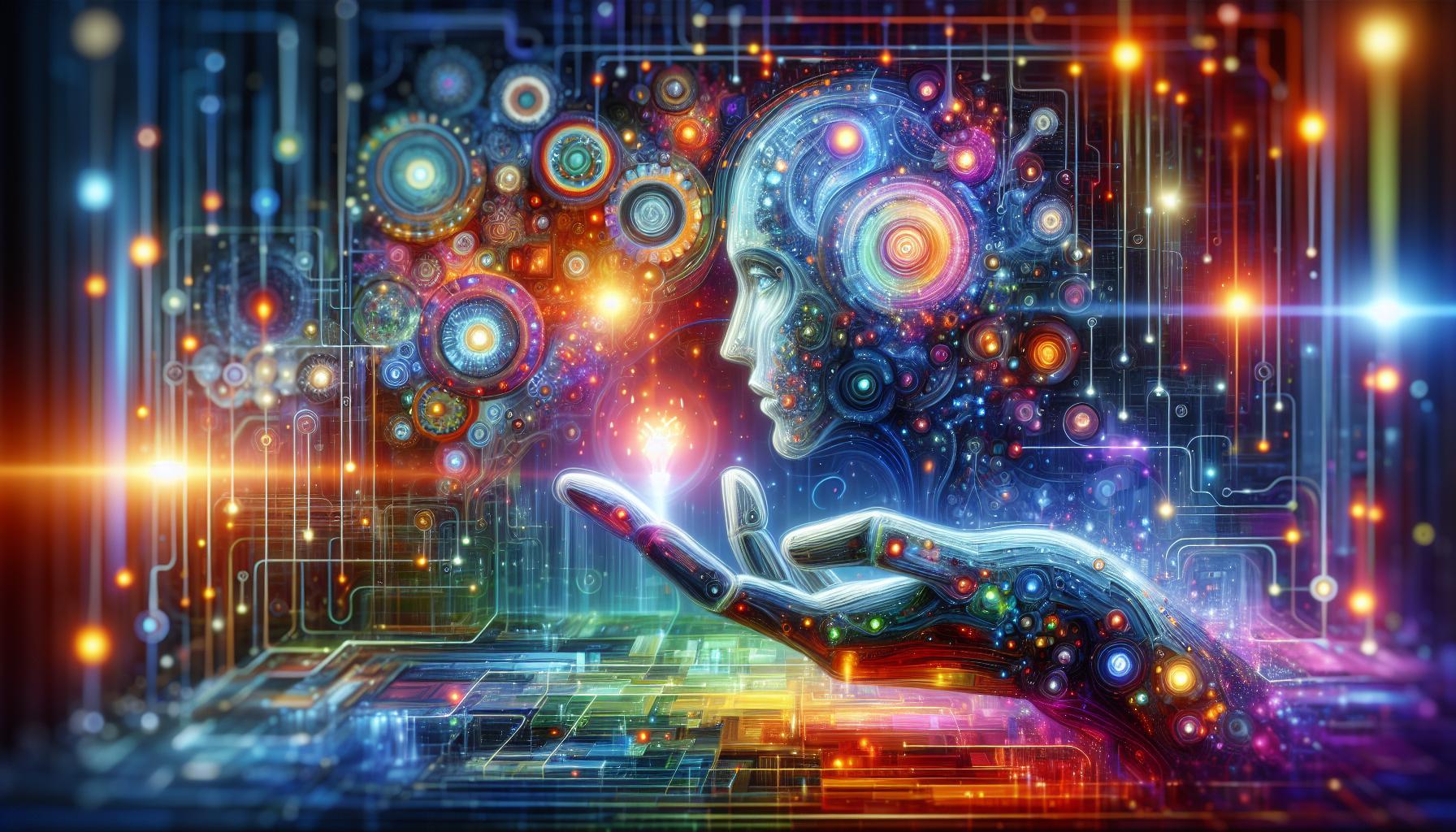As AI technology becomes increasingly integrated into our daily lives, concerns about security and privacy are at the forefront. Users of platforms like Leonardo AI are right to question whether their data is at risk. In this article, we’ll explore the safety of Leonardo AI, shedding light on its security measures and privacy practices to empower informed user decisions.
Understanding the Fundamentals of AI Security: What Users Need to Know
Understanding the implications of AI in cybersecurity is crucial for users who are increasingly integrating technologies like Leonardo AI into their daily operations. Emerging AI systems pose unique challenges and opportunities that can both enhance security and expose weaknesses. As these AI tools become more prevalent, users should be aware of the inherent risks tied to misuse, data privacy concerns, and the overall robustness of the systems they rely on.
One major concern is data protection. AI systems can inadvertently expose sensitive information if not adequately secured. Techniques such as differential privacy and federated learning are essential in safeguarding user data during processes like machine learning. Differential privacy ensures that individual data points cannot be reverse-engineered or identified in large datasets, while federated learning allows models to be trained on decentralized data without compromising the privacy of the data itself. Users of tools like Leonardo AI should verify whether such protective measures are integrated into the platform to mitigate the risks associated with data exposure.
Additionally, organizations must recognize the evolving landscape of AI threats. Cybercriminals are increasingly harnessing AI technologies for malicious purposes, including phishing attacks and automated exploitation of vulnerabilities. The advancement in large language models, for instance, significantly empowers security teams, allowing them to analyze vast amounts of data efficiently. Users should ensure that their AI tools are equipped with proactive measures to combat these sophisticated threats. Regular updates and active monitoring systems are vital for maintaining security efficacy.
To effectively implement AI security measures, users can take the following actionable steps:
- Research Security Features: Prior to using AI tools, review their security protocols to ensure they employ robust measures like encryption and access controls.
- Stay Informed: Keep abreast of the latest AI and cybersecurity trends to understand potential threats and mitigation strategies.
- Regularly Audit Your System: Conduct regular security audits to identify vulnerabilities and ensure compliance with best practices in safeguarding data.
By understanding these fundamentals, users can take a proactive stance in ensuring the safety and privacy of their engagements with technologies like Leonardo AI, making informed decisions about the tools that shape their digital experiences.
Privacy Concerns with AI Tools: How Your Data is Managed

As artificial intelligence continues to advance, the question of how data is managed and protected becomes increasingly pressing. Users of AI tools, including those leveraging Leonardo AI, often find themselves navigating a complex landscape of privacy concerns. Understanding how your data is managed in such environments is crucial to safeguarding your personal information.
Data Collection Practices
AI platforms typically gather vast amounts of data to enhance their functionality and improve user experiences. This data can include everything from usage patterns to personal identifiers. As highlighted in recent studies, the growing reliance on data collection poses significant risks to consumer privacy. Users should be aware that personal information may be collected without their explicit consent, often through a myriad of tracking technologies and cookies.
Transparency and Bias
Another prevalent concern is the lack of transparency regarding how AI tools like Leonardo AI utilize personal data. Users may not be fully informed about what data is collected, how it is used, or which third parties have access to it. Furthermore, potential biases embedded in AI algorithms can lead to discriminatory outcomes, making transparency essential in building trust. To mitigate these risks, users should scrutinize privacy policies and seek AI solutions that prioritize ethical practices and provide clear data handling protocols.
Best Practices for Data Management
To ensure a safer interaction with AI tools, consider adopting the following best practices:
- Stay Informed: Regularly check updates on privacy policies to understand how your data is managed.
- Utilize Privacy Settings: Leverage the privacy settings offered by AI tools to limit data collection and sharing.
- Question Data Requests: Be wary of requests for excessive personal information; assess necessity before sharing.
Implementing these strategies can significantly enhance your data security while using AI applications, making your experience with tools like Leonardo AI both safe and efficient. Remember, proactive engagement with your data privacy is essential in this digital age, particularly as the discussion surrounding the safety and security of AI tools deepens.
Best Practices for Safeguarding Your Information in Leonardo AI

In today’s digital landscape, safeguarding your information has become more critical than ever, especially when utilizing advanced platforms like Leonardo AI. As users increasingly rely on AI-driven tools for graphic design, photography, and other creative projects, awareness of security and privacy measures is essential. Implementing best practices can significantly enhance your protection and reduce the risk of data breaches or misuse.
Utilize Strong Passwords and Multi-Factor Authentication
One of the simplest yet most effective measures to safeguard your account on Leonardo AI is to use strong, unique passwords. A strong password should contain a mix of uppercase and lowercase letters, numbers, and symbols. Additionally, enable multi-factor authentication (MFA) if available. This adds an extra layer of security by requiring not just a password but also a second form of verification, such as a code sent to your mobile device.
Regularly Review Privacy Settings
Users should take the time to examine and customize their privacy settings on the platform. Understanding what information is shared and with whom can prevent unintentional exposure of sensitive data.
- Check data sharing preferences to limit the visibility of your projects and personal information.
- Be mindful of any community features that may involve sharing your creations publicly.
- Regularly update your preferences in accordance with your needs and comfort level.
Be Cautious with Third-party Integrations
When using Leonardo AI, you may discover opportunities to integrate with other software and services. While this can enhance functionality, it can also expose your data to additional risks. It’s vital to research any third-party applications and ensure they follow robust security practices. Only integrate tools from reputable sources to minimize vulnerabilities.
Stay Informed About Platform Updates
Leonardo AI, like many technology platforms, frequently updates its services to improve user experience and security measures. Subscribing to notifications or newsletters about these updates will keep you informed about new features and any changes to the platform’s security protocols. By being proactive and knowledgeable, you can better protect your information and make informed decisions regarding your digital creative processes.
By following these practices, users can significantly mitigate risks associated with data privacy and security while enjoying the creative capabilities that Leonardo AI offers. Remember, being cautious and informed is key to safely navigating the expansive world of AI technology.
Exploring AI Image Generation: A User’s Guide to Safe Practices

The evolution of AI image generation has opened new realms of creativity, but it also raises important questions surrounding security and privacy. As users engage with platforms like Leonardo AI, it’s crucial to be aware of best practices to protect personal data and ensure a safe experience. By familiarizing yourself with these guidelines, you can harness the power of AI while mitigating potential risks.
Understanding Data Privacy in AI Image Generation
When using AI image generators, it’s essential to consider what data you are sharing. Many platforms require users to upload images or provide detailed prompts, which can lead to unintended data exposure. To maintain your privacy, follow these guidelines:
- Avoid Personal Identifiable Information (PII): Never include sensitive personal details in your prompts or uploaded images.
- Read Privacy Policies: Familiarize yourself with the service’s privacy policy, especially regarding data storage and usage practices.
- Use Anonymity Tools: Consider using VPNs or anonymous browsing tools to enhance your online privacy while engaging with AI services.
Ensuring Safe Use of AI Image Generation Tools
To maximize your safety while using tools like Leonardo AI, it’s vital to adopt a proactive approach. Here are several actionable steps to take:
- Check for User Reviews: Before diving in, look for reviews and feedback from other users regarding their experiences concerning security and privacy.
- Limit Image Sharing: Be cautious about which images you share within the platform. Opt for generic visuals rather than those that might have personal significance.
- Keep Software Updated: Ensure that any tools or applications you are using are up-to-date to benefit from the latest security patches.
Real-World Examples of Security Breaches
Understanding past incidents can provide valuable insights into potential vulnerabilities. For instance, there have been cases where user-generated content was misappropriated for commercial use without consent. Being aware of such breaches encourages users to be vigilant about whom they trust with their data. By examining these examples, you can adopt a more informed and cautious approach while utilizing AI image generation technologies.
Incorporating these practices not only enhances your personal security but also fosters a more responsible community of AI users. As platforms evolve and improve their features and security measures, staying informed and cautious will help ensure your creative process remains both enjoyable and safe.
The Role of Encryption in AI: Protecting Your Creative Work
In today’s rapidly evolving digital landscape, the need for robust security measures has never been more crucial-especially for creators utilizing advanced technologies like artificial intelligence. The integration of encryption into AI platforms not only safeguards sensitive data but also protects the intellectual property of artists, writers, and other creative individuals. As they engage with tools such as Leonardo AI, understanding the role of encryption becomes essential to ensure their creative works remain secure and private.
Understanding the Mechanism of Encryption
Encryption serves as the backbone of security in many AI applications. By transforming readable data into an encoded format, encryption ensures that only authorized parties can access the original information. With creatives increasingly depending on AI technologies to produce unique artworks or content, the risks associated with data breaches or unauthorized use loom large.
Key benefits of encryption in protecting creative work include:
- Data Integrity: Encryption helps maintain the integrity of data by preventing unauthorized alterations.
- Confidentiality: Only those with the decryption key can access the original content, safeguarding sensitive ideas and concepts.
- Authentication: It ensures that the creator of the content can be verified, making it harder for impostors to steal or claim ownership.
Implementing Encryption in Your Creative Process
When integrating AI tools like Leonardo AI into your workflow, it’s vital to adopt encryption practices that protect your creative outputs. Here are some actionable steps:
- Use Encrypted Storage Solutions:
Opt for cloud services that provide end-to-end encryption for your projects. This means that even the service provider cannot access your files without your consent.
- Secure Communication Channels:
When collaborating with others, always use encrypted chat or email services to discuss your creative ideas. This practice acts as a barrier to potential eavesdroppers.
- Regular Backups with Encryption:
Regularly back up your work using encrypted files. This additional layer of security ensures that even in the event of a data breach or cyber attack, your creative work remains protected.
- Keep Software Updated:
Ensure that all AI tools and applications you utilize are updated regularly. Developers often release patches that enhance encryption standards, addressing any vulnerabilities that may appear over time.
In conclusion, the intersection of encryption and AI represents a critical aspect of safeguarding your creative work in the digital age. As highlighted in the article, “Is Leonardo AI Safe? Security and Privacy Insights for Users,” employing these protective measures not only enhances your peace of mind but also allows you to focus entirely on your artistry, free from the looming anxiety of data theft or misappropriation. By taking proactive steps towards encryption, you champion the integrity of your intellectual creations in an increasingly complex digital environment.
Real-World Risks: Common Security Threats in AI Applications
In today’s digital landscape, where artificial intelligence (AI) is increasingly integrated into various applications, the potential for security vulnerabilities becomes a paramount concern. As organizations leverage AI to enhance efficiency and decision-making, they also expose themselves to a range of security threats that could compromise user data and system integrity. For anyone questioning the safety of AI platforms, like Leonardo AI, it’s crucial to understand the common risks associated with these technologies and how they can impact users’ security and privacy.
### Potential Security Vulnerabilities
AI applications can be susceptible to several types of cyber threats, which are often exacerbated by their complex and interconnected nature. Some of the most pressing risks include:
- Data Breaches: As AI systems require vast amounts of data for training, they become attractive targets for hackers. Unauthorized access can lead to significant data breaches, exposing sensitive user information.
- Adversarial Attacks: Cybercriminals can manipulate AI models through adversarial examples-inputs specifically designed to confuse the algorithm. This can result in incorrect predictions or classifications, leading to erroneous decisions.
- Malicious Use of AI: Cybercriminals can exploit AI capabilities to automate attacks, creating sophisticated phishing schemes or deploying malware that adapts to security measures in real time.
- Insider Threats: Employees with access to sensitive AI systems can unintentionally or maliciously compromise data. Ensuring robust internal security protocols is essential to mitigate this risk.
### Real-World Implications
The implications of these security threats are not merely theoretical; real-world examples underscore the need for vigilance. For instance, the integration of AI in large-scale events, such as the upcoming Paris Olympics, highlights the growing emphasis on cybersecurity. Experts warn about the tailored cyber threats targeting such high-profile occasions, necessitating advanced AI-powered defense mechanisms to thwart attacks effectively [[3]](https://www.weforum.org/stories/2024/06/paris-olympics-2024-cybersecurity-experts-cyber-threats/).
To combat these risks, organizations utilizing AI should adopt comprehensive security strategies. Implementing practices such as regular security audits, employee training on recognizing threats, and advanced encryption methods can significantly reduce vulnerabilities. Additionally, investing in AI cybersecurity solutions that utilize machine learning for threat detection can enhance protective measures, making it difficult for attackers to succeed.
Ultimately, understanding the realities of these threats is vital for any user or organization contemplating the use of AI applications. By prioritizing security and being proactive in safeguarding their systems, they can better navigate the challenges posed in an increasingly AI-driven world. This proactive approach is crucial for anyone asking, “Is Leonardo AI safe?” as it underscores the importance of evaluating both technology and its implementation in ensuring user security.
Empowering Users: Leveraging AI Responsibly While Maintaining Security
In today’s digital landscape, the intersection of artificial intelligence and user safety has never been more critical. As users increasingly turn to innovative AI tools like Leonardo AI, understanding how to leverage these technologies responsibly while ensuring security is paramount. Amidst the growing concerns over data privacy and cybersecurity, users must be equipped with knowledge and strategies to navigate potential threats effectively.
To maximize the benefits of AI applications while minimizing risks, it is essential to adopt best practices that enhance both usability and security. Here are key strategies users should implement:
- Understand Permissions: Before using any AI tool, closely examine the permissions requested. Ensure that the application is not asking for more access than necessary, particularly concerning personal data.
- Stay Informed: Keep abreast of security updates and changes to privacy policies. Regularly check for updates to Leonardo AI and read up on user experiences and expert reviews that touch upon data safety.
- Two-Factor Authentication: Whenever available, use multi-factor authentication to add an extra layer of security. This step significantly reduces the risk of unauthorized access to your personal information.
- Validate Sources: Be cautious about the content generated by AI models. Verify information from trustworthy sources before sharing or acting on it, as AI can sometimes produce misleading or inaccurate outputs.
Real-World Examples and Considerations
Growing concerns about security have led to increased scrutiny of AI applications. For instance, as reported, up to 60% of mobile device threats originate from unsafe browsing, which can also include interactions with AI tools[[2]](https://www.weforum.org/stories/2022/07/why-ai-is-the-key-to-cutting-edge-cybersecurity/). By employing robust security measures and being vigilant about internet safety, users can lessen their vulnerability.
Moreover, organizations deploying AI solutions should ensure they are integrating appropriate safety controls. As stated in various discussions around AI, many tools are designed with specific use cases in mind, making it imperative for users to adopt a tailored approach that aligns with their individual security needs[[1]](https://www.weforum.org/stories/2024/09/why-the-new-ai-imperative-is-balancing-innovation-and-security/).
By embracing these proactive measures and fostering a culture of security awareness, users can harness the full potential of platforms like Leonardo AI while safeguarding their data against emerging threats. Balancing innovation with security is not merely an option but a necessity for all who engage with AI technologies.
Keeping Your Projects Safe: Tools and Techniques for Enhanced Privacy
In today’s digital landscape, maintaining privacy while using advanced tools like Leonardo AI is essential for safeguarding your projects. As concerns over data security intensify, employing a robust suite of privacy tools and techniques can provide peace of mind and protect sensitive information from potential breaches. When assessing whether “Is Leonardo AI Safe? Security and Privacy Insights for Users,” it becomes imperative to explore how to strengthen your project’s security through various methods.
Utilizing Effective Privacy Tools
To bolster your project’s privacy, consider adopting a selection of specialized tools that can enhance your overall security. Here’s a list of essential tools:
- VPN Services: Virtual Private Networks encrypt your internet connection, hiding your online activities from prying eyes.
- Intrusion Detection Systems (IDS): These systems monitor network traffic for suspicious behavior, alerting you to potential threats.
- Password Managers: Tools like LastPass or Bitwarden securely store and manage your passwords, ensuring you use strong, unique passwords for each service.
- Encrypted Storage Solutions: Services like Tresorit can safeguard your files with end-to-end encryption, making them unreadable without proper authorization.
Implementing Strong Data Management Practices
Beyond tools, adopting proactive data management strategies is fundamental to achieving enhanced privacy. Ensure you follow these best practices:
- Data Minimization: Only collect data that is absolutely necessary for your project. Avoid excessive data storage to reduce risk.
- Regular Backups: Implement a routine for data backups. Use both cloud and physical storage solutions to protect against data loss.
- Access Controls: Limit access to sensitive information to only those who need it. Use role-based access controls wherever possible.
Continuous Monitoring and Updates
Regularly monitoring your systems and software for vulnerabilities is critical in maintaining security. Here are a few approaches you can take:
| Monitoring Strategy | Description |
|---|---|
| Routine Security Audits | Perform regular audits of your security settings and data storage processes to identify weaknesses. |
| Software Updates | Keep all software and privacy tools updated to the latest versions to protect against newly discovered vulnerabilities. |
| User Training | Educate your team about security best practices and phishing threats to foster a more secure environment. |
By incorporating these tools and techniques into your project management processes, you can significantly enhance your privacy and security. As you navigate the complexities of using AI tools like Leonardo AI, remember that an informed approach to digital privacy is your best defense against potential threats. Understanding whether “Is Leonardo AI Safe? Security and Privacy Insights for Users” can guide you in adopting the right measures to protect your digital assets effectively.
Q&A
Is Leonardo AI Safe? Security and Privacy Insights for Users
Yes, Leonardo AI prioritizes security and privacy. The platform implements various measures to protect user data and ensure a safe experience. Data encryption and strict access controls are standard practices for safeguarding sensitive information.
With AI technologies, safety concerns frequently arise. Leonardo AI uses advanced encryption techniques and complies with industry standards to ensure user data remains private. Users can review Leonardo AI’s privacy policy for detailed insights.
What data does Leonardo AI collect?
Leonardo AI collects user input data and activity logs. This can include things like settings, preferences, and usage patterns to improve its functionality and user experience.
User data is primarily used to enhance the performance of the AI and to personalize services. Importantly, Leonardo AI emphasizes user consent and offers options for data management. Review the full details in their privacy policy.
Can I delete my data from Leonardo AI?
Yes, users can request data deletion. Leonardo AI provides a clear process for users to manage their data, including options to delete personal information.
This capability reflects a commitment to user control over data. Upon request, the team will guide you through the process to ensure your data is removed as per applicable laws. Check the user dashboard for your data management options.
Why does Leonardo AI require access to personal information?
Leonardo AI requires personal information to enhance user experience. Access to data allows the AI to function more effectively, tailoring results to individual needs.
This approach includes personalized suggestions, improved accuracy, and a more intuitive interface. The collection of data is done with user consent, and it can be managed or revoked as desired. Understanding the reasoning behind data collection can help users feel more at ease.
How does Leonardo AI ensure security during data transmission?
Leonardo AI uses encryption to secure data transmission. This ensures that information exchanged between users and the AI remains private and is protected from unauthorized access.
By implementing SSL/TLS encryption, Leonardo AI guarantees that all data sent over the internet is encoded. Such practices are critical in maintaining user trust and securing sensitive data. For those unaware, SSL/TLS are protocols ensuring a secure connection.
What features enhance user privacy in Leonardo AI?
Leonardo AI offers several features to enhance user privacy. Key options include anonymous usage and controls over data sharing.
The platform actively provides users with tools to adjust privacy settings according to their comfort levels. Options for anonymous browsing may encourage further exploration without risking personal exposure, and user guides on privacy management are readily available.
Is there a risk of data misuse with Leonardo AI?
Leonardo AI implements strict measures to prevent data misuse. They follow legal regulations and best practices to safeguard user information.
However, as with any online platform, there’s always a degree of risk. Leonardo AI actively engages in regular security audits and employs industry-standard protective measures. For users, staying informed and reviewing periodic updates about security practices enhances trust.
Final Thoughts
In conclusion, understanding the safety of Leonardo AI is paramount for users seeking to harness its innovative capabilities in image creation. We’ve explored essential aspects of security, such as data protection and privacy measures, ensuring that your creative endeavors remain secure. By recognizing how AI processes and utilizes images, you can make informed decisions about your engagement with these powerful tools.
Remember, while technology continues to evolve, so do the safeguards in place to protect you. Don’t hesitate to delve deeper into AI visuals; by doing so, you not only enhance your creative toolkit but also contribute to a broader understanding of its potential and limitations. Stay curious, experiment with the technology, and embrace the exciting world of AI art creation with confidence! Always remember to keep abreast of the latest updates and practices to enhance your experience further. Your creative journey with AI starts now-happy exploring!





